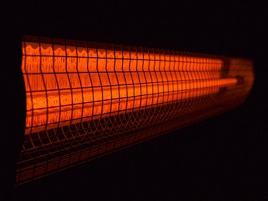The history of the electric heater begins in 1859, when the American Simpson patented a method of converting electrical energy into heat. In the first half of the last century, General Electric began mass production of a device in which a heating element was sealed in a tube with insulating material. From that moment, the scope of electric heating devices has been constantly expanding. They gradually appeared in everyday life, and were widely used in production. The design of the device has also undergone significant changes. Only the very principle of converting electrical energy into heat has remained untouched .

Now we can not imagine our life without many household appliances. The heating element is used in household electric heaters, electric irons, dishwashers, etc. It is also used in the manufacture of underfloor heating; special thermal cables are used here. The widespread use of thermal cables in production, as heating pipelines or electrical machines. A small heating element can also be found in control cabinets, its purpose is to maintain a constant temperature regime in the winter. This is necessary so that condensation does not occur when the ambient temperature changes, which can negatively
affect the work of the entire process control equipment. Modern electric cars are also equipped with special anti-condensation windings, the direct purpose of which is to keep the temperature of the motor windings above ambient temperature, in order to avoid the formation of condensate. These windings are the heating element that extends the life of the electric machine.
Recently, heaters have become more widespread, as a working element in which a ceramic heating element is used. Its design features can significantly improve operational parameters.
classic
electric heaters. The working fluid of such heaters is ceramic, which is heated using metal plates. The advantages of this design are obvious, unlike coil electric heaters, ceramic heating is much faster. Due to the fact that ceramics practically do not deteriorate when heated, the durability of the device increases significantly. It is also beneficial to use
ceramic heaters in terms of fire safety.
Another example of the use of heating elements in everyday life is a heating element for a washing machine. You probably paid attention to the fact that only cold water is required to connect the washing machine. The temperature during washing is provided by automation, and special electric heaters are used as heating elements.